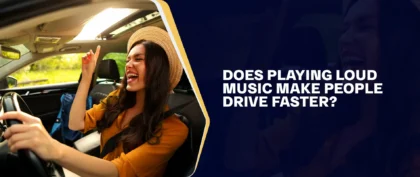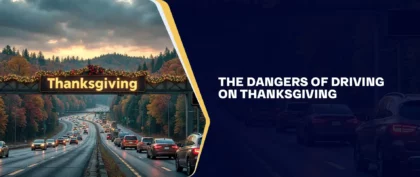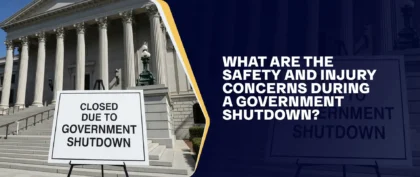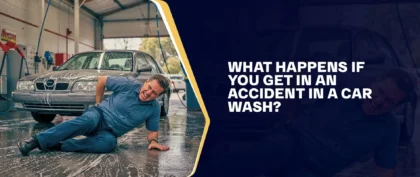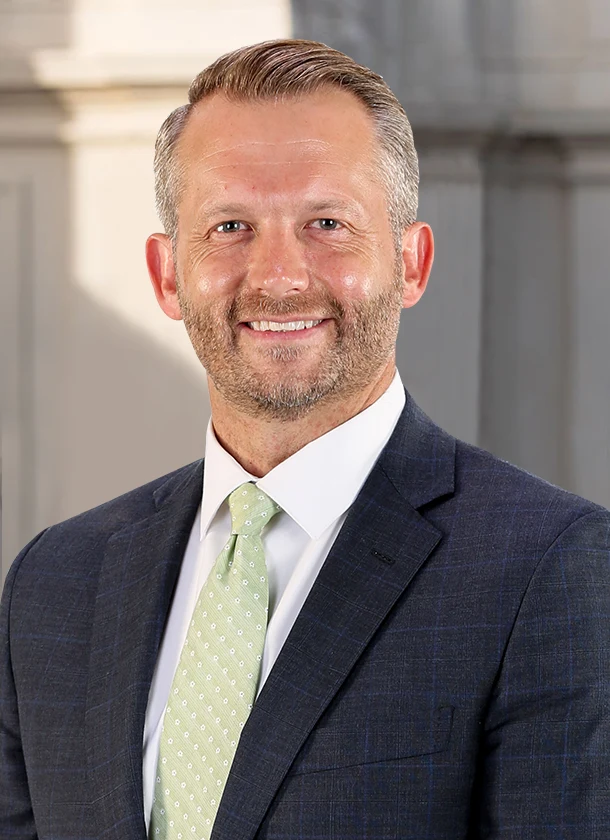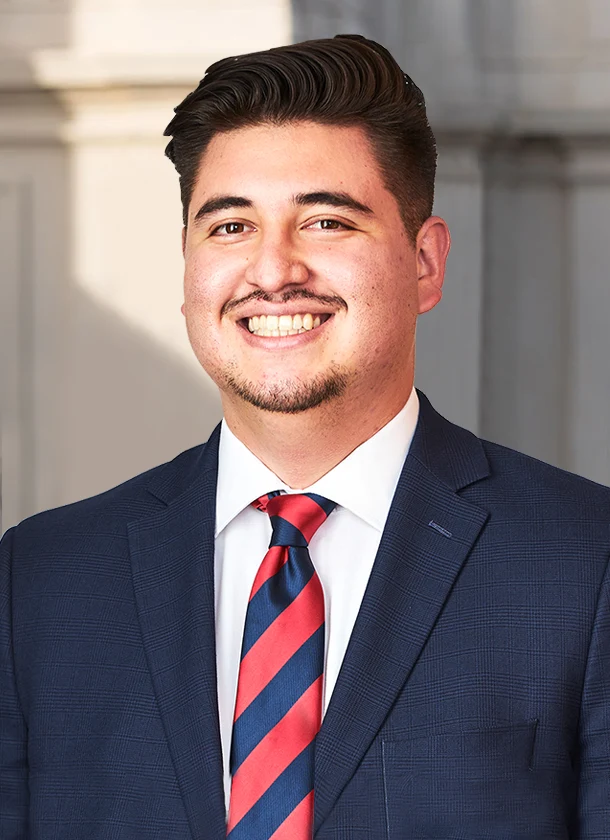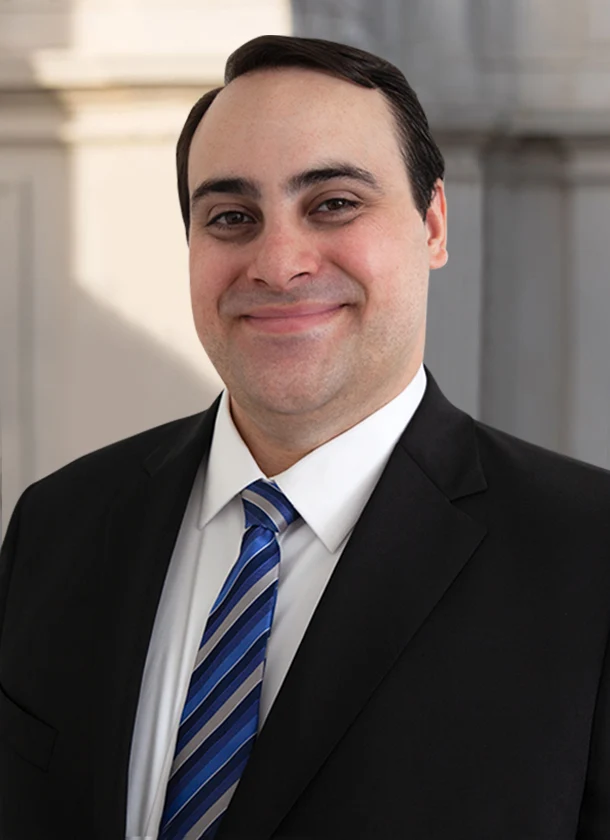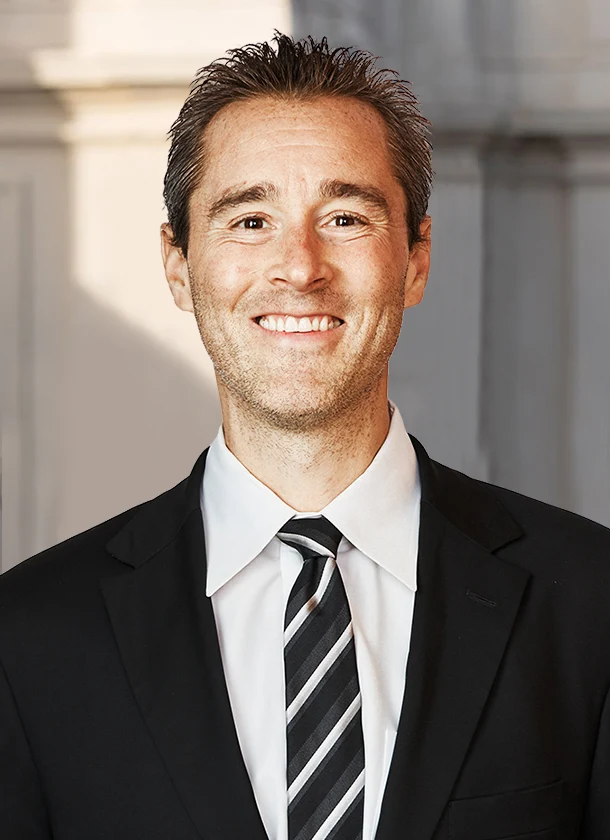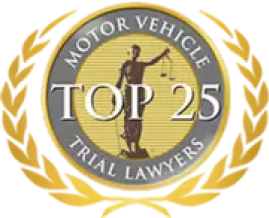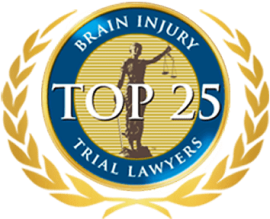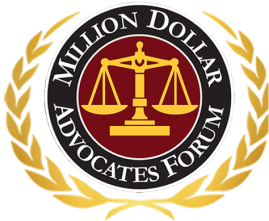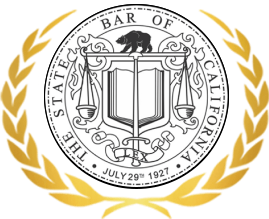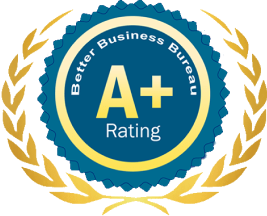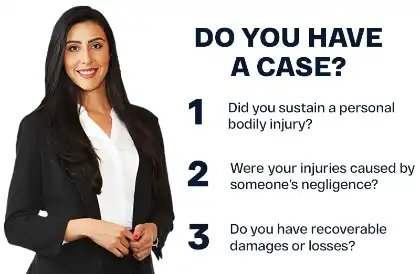TL;DR: In most parking lot accidents, the driver who was reversing is at fault because they must yield to cars, pedestrians, and cyclists in active lanes. Failing to check their surroundings before backing up breaches their duty of care, allowing injured drivers to seek compensation under California law.
Table of Contents
The reversing driver is usually at fault in most parking lot accident cases. The level of caution required increases in crowded parking lots, where pedestrians and vehicles are in close proximity to each other. A reversing driver who fails to check their surroundings or yield the right of way may be found negligent for not exercising the higher standard of care that the situation demands.
Parking lots are high-risk areas for collisions. With cars constantly pulling in and out and limited visibility between rows, even brief inattention can cause a crash.
Minor crashes in parking lots often result from the following situations:
- A moving vehicle collides with a parked car.
- An illegally parked vehicle creates a hazard that leads to a collision.
- A driver reverses without checking blind spots or the surrounding area.
- Two drivers make unsafe movements or position their vehicles improperly, causing a collision.
Even low-speed crashes can cause injury or costly damage. Acting quickly afterward can help protect your rights and strengthen potential claims.
If someone backs into you:
- Exchange information with them.
- Take photos and gather witness details.
- Report the crash to your insurer.
- File a police report if needed.
- Call law enforcement if the driver leaves the scene.
Contact a parking lot accident lawyer if you’re unsure what to do next. They can help establish fault, gather evidence, and guide you through your claim.
Why The Driver Backing Up Is Usually At Fault
Drivers who reverse must use greater caution since moving backward limits visibility and goes against the normal flow of traffic.
Here are reasons why reversing drivers are usually at fault:
- Duty to Yield — When reversing, drivers must yield to anyone already traveling in the main lane. Vehicles and pedestrians in active traffic always have the right of way. Failing to do so could be considered a failure to yield and can make the reversing driver liable.
- Limited Visibility — Backing up reduces visibility, especially in areas with larger vehicles or tight spaces. Drivers must move slowly and stop if they can’t see clearly.
- Overreliance on Technology — Backup cameras and sensors can help, but they don’t replace direct observation. Drivers must still look over their shoulders and check mirrors to confirm if it’s safe to reverse.
- Failure to Yield or Observe — If a driver reverses without yielding or checking surroundings, they breach their duty of care and are usually liable for the resulting damage or injuries.
Typical Parking Lot Crash Scenarios
Tight spaces, limited visibility, and constant movement make backing accidents in parking lots common, especially when drivers fail to yield or stay alert. Understanding how these collisions occur helps determine fault and support any potential claim.
| Scenario | Standard Fault | Shared Fault Possibility |
| A car backs out into moving traffic | The reversing driver is usually at fault. | Shared fault may apply if the approaching driver was speeding or driving without headlights. |
| Two cars are backing out at the same time | Both drivers may share fault. | Camera footage and impact points help determine who reversed first or failed to stop. |
| Hitting a parked or illegally parked car | The moving driver is typically at fault. | If the parked vehicle blocks a lane or is parked illegally, fault may be shared. |
| Rear-end collision in parking lanes | The following driver is usually at fault. | If the rear-end collision was caused by the front driver who suddenly stopped, they may share some fault. |
| Pedestrian or cyclist impacts | The driver is almost always at fault. | Pedestrians and cyclists usually have the right-of-way. Drivers must check mirrors and their surroundings before backing up. |
Even minor parking lot accidents can result in serious injuries and costly property damage. Understanding how comparative fault works helps you know what to expect if both parties share responsibility.
Why Parking Lot Backing Accidents Happen
Most parking lot collisions stem from carelessness or poor visibility. Even at low speeds, a short lapse in attention can cause a crash. Common causes include:
- Not checking mirrors or blind spots before reversing.
- Overreliance on backup cameras or sensors.
- Driving too fast in a parking lot.
- Ignoring stop or yield signs.
- Cutting across parking rows instead of using marked lanes.
- Using a phone or other distractions while backing up.
- Poor lighting or visibility from large vehicles or landscaping.
- Failing to yield to passing traffic while reversing.
- Parking too close to other cars.
- Driving under the influence.
The Insurance Institute for Highway Safety (IIHS) reports that rear crash prevention features, such as automatic braking and rear cross-traffic alerts, help decrease backing-up collisions. Still, technology is only there to help. Drivers should stay alert, move slowly, and check their surroundings before reversing.
How To Determine Fault After A Parking Lot Backing Accident
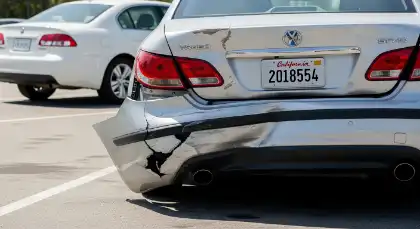
To determine who is at fault when someone backs into you, identify who had the right of way and who failed to act safely. If you’re searching for free accident lawyer advice, many California personal injury firms, like the AK Law Firm, offer free consultations where you can discuss your case, review evidence, and understand your legal options before deciding how to proceed.
Insurers and investigators review the following factors:
- Right of Way — A driver backing out must yield to moving traffic, pedestrians, and cyclists. If they reverse without checking, they’re typically at fault.
- Point of Impact — Rear-end damage to the backing vehicle and front or side damage to the other often indicates the reversing driver was at fault.
- Vehicle Damage — A parked car typically shows direct impact damage, whereas a backing car often exhibits crushed or bent rear panels.
- Witness Statements — Individuals who witnessed the crash can provide information about who was backing up and how the incident occurred.
- Video Footage — Dashcam or security camera recordings clearly show who was moving and who failed to yield.
- Police Report — If a crash happens on private property, the police may not respond or file a report. When they do, a police or incident report can document the circumstances. Otherwise, a property or business report can serve as important evidence.
California law permits reversing only if it’s safe and doesn’t block traffic. If drivers back up carelessly, they may be held liable.
What To Do If Someone Backs Into You
Quick action can help protect your health, rights, and potential claim:
- Check for injuries and call 911 if anyone is injured, experiencing pain, dizziness, or disorientation.
- If possible, move vehicles to a safe area and turn on hazard lights to warn other drivers.
- Exchange information with the other driver. Get their name, phone number, driver’s license, license plate, and insurance details. Confirm insurance coverage.
- Take photos and videos of both vehicles, the impact point, license plates, and nearby signs or markings. These visuals help prove who was backing up.
- Get witness names and contact details. Their statements can confirm what happened.
- If there are injuries or major damage, report the incident to the police. However, if the accident occurred on private property, notify the property manager or store security.
In California, file an SR-1 accident report with the DMV within 10 days if any injury or property damage exceeds $1,000.
- Notify your insurance company promptly. Provide accurate details but avoid discussing fault.
- Seek medical care even for mild pain. A doctor’s report can connect your injuries to the crash and strengthen your potential claim.
- Contact a personal injury lawyer if you have suffered injuries or are involved in an insurance dispute. They can communicate with insurers and help collect evidence to support your case.
How Insurance Handles Parking Lot Accidents
After determining fault, your insurance coverage decides how repair and medical costs will be paid. Most parking lot crashes happen on private property, so claims are typically settled through insurance rather than traffic citations. Here are the main types of coverage that may apply:
- Collision Coverage — Pays for repairs to your vehicle after an accident, regardless of who was at fault. You’ll need to pay a deductible first, and your insurer may later recover costs from the at-fault driver.
- Liability Coverage — Covers the other driver’s property damage and medical expenses if you share liability. This coverage is mandatory in most states and applies when a reversing driver is found to be at fault for the crash.
- Uninsured or Underinsured Motorist Coverage (UM/UIM) — UM/UIM coverage applies when the at-fault driver has no insurance or flees the scene. Depending on your policy, it can cover repair costs, medical bills, and related losses.
Insurers assess fault using photos, statements, and footage. If disputes arise or the settlement seems low, a personal injury lawyer can negotiate the amount to advocate for the full extent of your losses.
Can I File An Injury Claim After A Parking Lot Crash?

Yes. Even a parking lot fender bender can cause minor injuries that can worsen over time. Common bodily injuries include:
- Whiplash or neck injuries.
- Back or spinal cord injuries.
- Shoulder or joint sprains.
- Bruises from seat belts or impact.
- Concussions or mild head injuries.
- Wrist or arm injuries from bracing.
Symptoms such as stiffness, headaches, or dizziness may appear hours or days after the crash. Seek medical attention right away for your health. Doing so also creates records linking your injuries to the accident.
If another driver’s negligence caused your injuries, you may file a personal injury claim to pursue medical fees, lost wages, and other related losses.
How To Prevent Parking Lot Accidents
According to the National Safety Council (NSC), vehicles backing up cause about 9% of pedestrian deaths in parking lots. To better understand where these risks are highest, see this list of the most dangerous cities for pedestrians.
While many of the latest vehicles have backup cameras and sensors, these systems are not foolproof. A dirty lens, glare, or blind spots can block your view and prevent you from detecting smaller objects or people. Drivers shouldn’t rely too heavily on technology. Simple habits can significantly reduce the risk of causing or being involved in a parking lot collision:
- Conduct a Full Walk-Around — Take a few seconds to look behind and around your vehicle for children, pets, or small objects that may be out of sight. A quick 360-degree inspection takes only a few seconds but can prevent serious accidents.
- Don’t Rely Solely on Technology — Backup cameras and sensors are helpful, but they can miss motorcycles, small vehicles, or pedestrians. Always look over your shoulder and use your mirrors while backing up to maintain complete visibility.
- Park Strategically — Whenever possible, park so you can pull out facing forward. This practice avoids reversing and enhances visibility when leaving.
Modern vehicles often feature blind-spot monitoring systems that alert drivers with audible sounds, visual indicators, or tactile vibrations. However, these tools have limits and may not detect smaller objects or fast-moving pedestrians. Combining technology with active awareness remains the most effective way to stay safe in parking lots.
How A Lawyer Can Help After A Parking Lot Backing Accident
Parking lot backing accidents may seem minor, but determining fault is often a complex process. Insurance companies may try to reduce or deny your claim. You might wonder, “Do I need a personal injury lawyer?” While it’s not required, getting legal support can be beneficial in protecting your rights. They can:
Gather Evidence To Prove Fault
Determining who’s at fault in a parking lot accident can be challenging, especially if both vehicles were moving. Car accident lawyers can collect and organize key evidence that clarifies what happened and supports your claim.
This evidence may include:
- Photos & Videos — Images of the vehicle damage, tire marks, debris, and the overall scene help show how and where the collision occurred.
- Surveillance & Dashcam Footage — Security cameras and dashboard videos can reveal the exact sequence of events. It can confirm whether the reversing driver failed to yield or check for traffic.
- Witness Statements — Independent witnesses can verify details such as vehicle speed, direction, or who was backing up at the time of the crash.
- Accident Reconstruction Reports — Specialists can analyze impact angles, braking patterns, and movement timing to recreate how the crash happened.
- Vehicle Black Box Data — Some vehicles record speed, brake pressure, and steering data in the moments leading up to an impact. This information can support your version of the incident.
These pieces of evidence help build a clear, fact-based case showing the reversing driver failed to act safely before backing up. It can also strengthen your position during insurance negotiations or legal proceedings.
Establish Negligence
To pursue compensation, you must prove that the other driver acted negligently and that their actions caused you losses. Your parking lot car accident lawyer can demonstrate that:
- The driver had a duty to operate their car safely and yield when reversing.
- They breached that duty by backing up without checking their surroundings.
- Their negligence caused the collision and your injuries.
- You suffered measurable damages, such as repair costs or medical bills.
Handle Insurance Communications
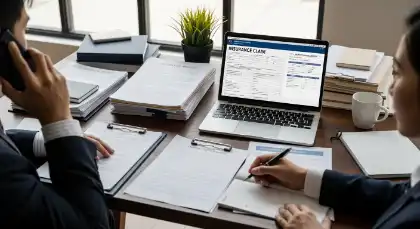
Insurers may seek ways to reduce or deny claims. Parking lot accident lawyers can handle all communication on your behalf. They’ll:
- Respond to insurers with accurate, documented facts.
- Push for fair settlement offers based on evidence.
- Protect you from signing lowball offers.
You can focus on healing while your personal injury attorney handles the paperwork and negotiations on your behalf.
Meet Legal Deadlines
Filing deadlines and reporting requirements vary by state. Missing them can jeopardize your claim. Your accident lawyer works to:
- File required reports on time.
- Submit insurance claims within policy limits.
- Preserve key evidence before it’s lost or deleted.
They’ll assist you in tracking and managing deadlines, helping you file valid and complete paperwork.
Evaluate Compensation
Lawyers for car accidents can help identify the damages you can pursue after a parking lot backing accident. Compensation may cover both financial and non-financial losses, depending on the specific circumstances of the case. These damages may include:
- Medical expenses and ongoing care.
- Lost wages or reduced earning ability.
- Property damage and repair costs.
- Pain and emotional suffering.
Getting legal representation in a parking lot backing accident means more than just guidance. Attorneys can serve as your advocates, assisting in gathering evidence, negotiating with insurance companies, and managing the claims process to safeguard your rights and interests.
FAQs About Parking Lot Backing Accidents And Fault
Parking lot accidents are common, but determining fault and handling insurance claims can be a complex process. Below are clear, fact-based answers to common questions about liability, prevention, and what to do in the event of such accidents.
For more information on related topics, visit our Frequently Asked Legal Questions page for additional legal insights and guidance. You can also find answers to unusual questions about traffic safety, such as ‘Can kids legally ride on the backs of motorcycles?’
Who Is Usually At Fault If Someone Backs Into Me In A Parking Lot?
In most cases, the driver who was reversing is at fault. The law requires them to make sure the path is clear before backing up.
- Drivers in active lanes generally have the right of way.
- The reversing driver must stop and yield to cars, pedestrians, or cyclists behind them.
- Failing to look carefully or backing out too quickly is considered negligent.
If someone backed into your car, the driver likely violated their duty to yield and may be responsible for any resulting damages and injuries.
Who Is Responsible If Someone Hits An Illegally Parked Car?
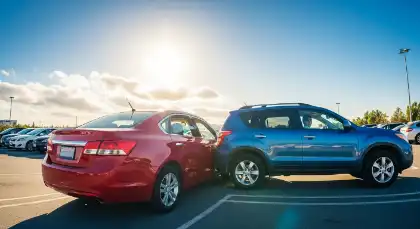
Hitting an illegally parked car still constitutes negligent driving. Both drivers may share fault depending on the situation.
- The moving driver is responsible for maintaining control and avoiding obstacles.
- The illegally parked driver may hold a smaller percentage of fault for obstructing traffic.
- Comparative fault laws reduce damages based on each party’s share of responsibility.
For example, if the court finds that the moving driver is 70% at fault and the illegally parked driver is 30% at fault, the moving driver can still recover 30% of the damages they incurred. Similarly, the parked driver’s compensation decreases by their share of fault.
Will My Insurance Go Up If Someone Hits My Parked Car?
It depends on which policy you use when filing a parking lot accident insurance claim.
- If you file a claim with the at-fault driver’s insurance, your rates generally won’t change.
- Your insurer may increase your premium if you use your coverage, which is contingent on state laws and company policy.
If someone hits your car in a parking lot, report the incident to your insurance company as soon as possible. This notification helps protect any potential claim, especially if the at-fault driver refuses to cooperate or leaves the scene.
What Should I Do If Someone Hits My Parked Car And Leaves Without A Note?
Leaving the scene after a collision without leaving a note is a hit-and-run, which is a crime in every state.
If this happens to you:
- Call the police and report the incident immediately.
- Take photos of your vehicle and its surroundings.
- Check for nearby security cameras or witnesses.
- Contact your insurer; your uninsured motorist coverage may apply.
Evidence that helps identify a hit-and-run driver includes surveillance footage, witness statements, paint transfers, and fragments of license plates. Once identified, that driver can be held civilly liable in California and many other states for damages, including vehicle repairs, medical costs, and other losses.
Get Legal Help For Your Parking Lot Accident
In parking lot accidents involving a reversing vehicle, the driver backing up is usually at fault. They must move slowly, check their surroundings, and yield to pedestrians, cyclists, and vehicles already traveling in the main lane.
If you were involved in such an accident, our car accident lawyers can gather evidence, determine liability, and handle your insurance claim from start to finish. We represent injured drivers, passengers, pedestrians, and cyclists across California, regardless of immigration status.
Our firm works on a contingency fee basis, so you won’t owe attorney fees unless we recover compensation through a settlement or award. Case-related costs may apply, but our attorneys will explain these during your consultation.
Even seemingly minor parking lot crashes can result in serious injuries and substantial financial losses. Call us at (888) 488-1391 or complete our “Do I Have A Case?” form to discuss your situation with our legal team.

